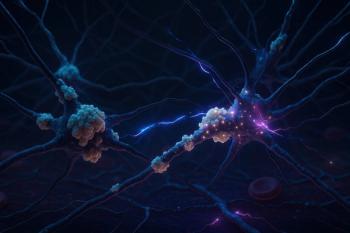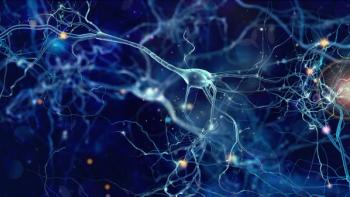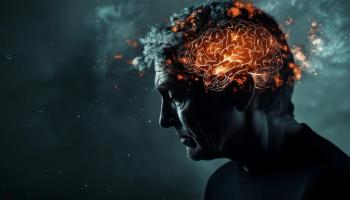
Lithium: A Narrative Overview and Future Frontiers
Lithium: what’s its history and where do we still need more information?
Lithium occupies the third position on the periodic table and is a naturally occurring element with the chemical symbol, Li. The name
In 1870, lithium bromide—a compound of lithium—was recommended as an anticonvulsant and hypnotic for epileptic patients by neurologist, Silas Weir Mitchell. In 1871, lithium was first prescribed for mania by William Hammond, a professor of Disease of the Mind and Nervous System at the Bellevue Hospital Medical College in New York. Anecdotal evidence encouraged the continued medical and psychiatric use of lithium for
Around 1947, Australian psychiatrist John Cade accidentally discovered lithium’s calming properties by injecting it as a solution base mixed with urine from his manic patients into guinea pigs. Cade believed that mental illness had a biological and psychological component, and hence needed medication treatment along with talk therapy.4 He postulated that mania was caused by high levels of a “toxin” in the body that was excreted in the urine. By injecting the “toxic” urine from his manic patients into the guinea pigs, he wanted to see if he could induce the same manic effects in the rodents to confirm his theory.5 Instead, he discovered that lithium solution-based injections calmed the guinea pigs. He followed this accidental discovery with his first clinical report in 1949, where he claimed that lithium improved mania in mood disorders and also reduced restlessness in psychotic patients.6
Cade’s paper prompted further interest in the psychiatric use of lithium, including the first randomized controlled trial in 1954. In 1970, the US Food and Drug Administration approved lithium for the treatment of
Besides its benefits in BD, lithium has preventative effects against suicide across all mood disorders.9 Approximately 25% to 50% of patients with BD attempt suicide in their lifetime, and these attempts have a 10-fold higher lethality risk than they do in the general population.10 Lithium therapy significantly lowers the number of both attempted and completed suicides by reducing the number of mood disorder relapses, aggression, and impulsivity.11 The antisuicidal effect of lithium is significant at low concentrations and therapeutic levels, and is independent of its mood effects. Lithium is commonly used for antidepressant augmentation in refractory
Lithium also has neuroprotective properties, which may explain its strong preventative effects. Patients with BD on lithium have also been found to have larger hippocampus volumes. A mini review of 13 studies identified lithium’s neurotrophic effects while comparing lithium treated patients with those not taking lithium. Nine out of 13 studies demonstrated an increase in hippocampal volumes of patients on lithium.13 Furthermore, a study in Texas suggested that higher levels of lithium in public water supply offered protective effects in the prevention of death by suicide.14 Another study in Texas using statistics from 27 Texas counties from 1978-1987 showed that the incidence of homicide, rape, and suicide was much lower in areas where lithium levels in drinking water ranged from 70-170 mcg/L.15
More recently, studies have tested lithium for potential preventative effects against
Lithium facilitates neurotrophic and neuroprotective responses in the brain. The exact mechanism by which lithium produces these effects is largely unknown. However, it has been hypothesized that it works by inhibiting the glycogen synthase kinase 3 beta enzyme (GSK-3). GSK-3 is a key player in neurological disorders and has a major role in neuron deterioration by impairing cellular clearance leading to the accumulation of neurotoxic aggregates. Inhibition of this enzyme could have a potent beneficial effect in protection from neurodegeneration.18 These results further reinforce the disease-modifying properties of lithium in the MCI-Alzheimer disease group.16 Lithium remains beneficial and safe in the older population, but lower serum levels are recommended for that age group because lithium crosses the blood-brain barrier more readily in that population.19
There is substantial scientific evidence for lithium’s successful track record in psychopharmacology for over 60 years. The results from studies to assess its possible use and effectiveness in preventing/modifying the effects of Alzheimer disease are also promising. However, more research needs to be conducted to further explore and confirm its neurotrophic and neuroprotective properties and use, specifically in the treatment of dementia. Lithium may just be the answer we are so desperately in search of, the missing link, the wonder drug for an illness that we have so little to offer to patients.
Dr Raza is a research volunteer in the Department of Psychiatry & Behavioral Health at Hackensack Meridian Health. Dr Doumas is the chief of the Division of Child & Adolescent Psychiatry, the residency program director, and vice chair of education and research at Jersey Shore University Medical Center. Dr Afzal is the medical director at the outpatient psychiatry faculty practice, assistant professor, Department of Psychiatry & Behavioral Health, Hackensack Meridian School of Medicine, and residency program director at Ocean University Medical Center.
References
1. Aral H, Vecchio-Sadus A.
2. Shorter E.
3. Blazeski G. When 7-up was created in 1929 it contained lithium, a mood-stabilizing drug. The Vintage News. January 16, 2017. Accessed February 28, 2023.
4. Lowe J. 'I don't believe in god, but I believe in lithium.' The New York Times. June 25, 2015. Accessed February 28, 2023.
5. Schioldann J.
6. Cade JF.
7. Gitlin M.
8. Lexicomp. Lithium: drug information. UpToDate. 2023. Accessed February 28, 2023.
9. Lewitzka U, Severus E, Bauer R, et al.
10. Zakowicz P, Skibińska M, Wasicka-Przewoźna K, et al.
11. Baldessarini RJ, Tondo L, Davis P, et al.
12. Unipolar depression in adults: treatment with lithium. UpToDate. 2022. Accessed February 28, 2023.
13. Lucini-Paioni S, Squarcina L, Cousins DA, Brambilla P.
14. Blüml V, Regier MD, Hlavin G, et al.
15. Schrauzer GN, Shrestha KP.
16. Forlenza OV, Radanovic M, Talib LL, Gattaz WF.
17. Chen S, Underwood BR, Jones PB, et al.
18. Rippin I, Eldar-Finkelman H. Novel modality of GSK-3 inhibition for treating neurodegeneration. J Neurol. 2018;3(6).
19. Aziz VM.
Newsletter
Receive trusted psychiatric news, expert analysis, and clinical insights — subscribe today to support your practice and your patients.











